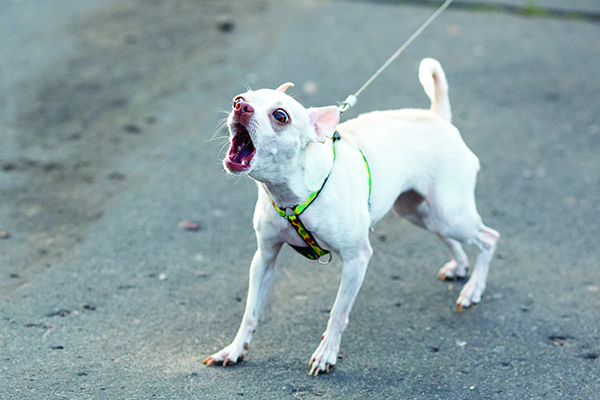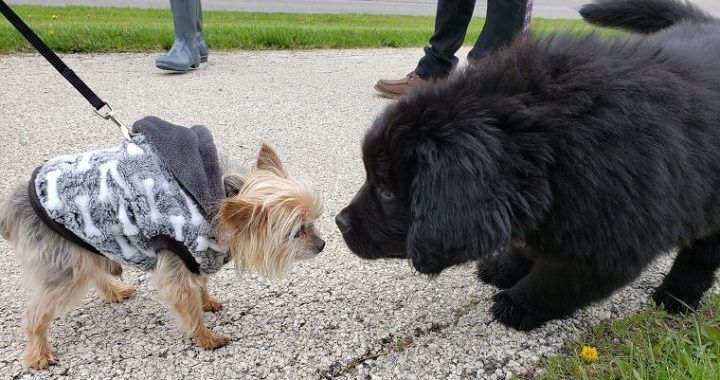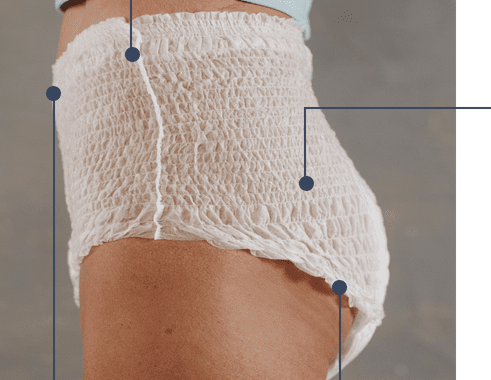Receptive Dog Behavior

Receptive Dog Behavior
Reactivity is a generally utilized term in the canine conduct and preparing world, yet it’s disapproved of by some in our calling since it’s a to some degree shapeless social descriptor. “Responsive” becomes acclimated to depict everything from the canine who barks a couple of times when the doorbell rings to the canine who transforms into a raving crazy person within the sight of her triggers.
Here’s the best definition I’ve heard: A receptive canine is unified with a strange degree of excitement because of an ordinary upgrade. Hence, the canine who barks a couple of times at the doorbell would not be viewed as responsive, however, the canine who barks unreasonably at seeing another canine, a non-undermining human, a passing vehicle, or whatever another improvement that causes a critical overcompensation, would be. It doesn’t need to be outrageous to be viewed as reactivity – just “unusual.”
While numerous proprietors are equipped for managing a canine who shows a low to direct even out of reactivity, canines who show significant degrees of excitement can be overwhelming even to experienced canine darlings. It tends to be baffling to find that your canine’s degree of receptive conduct is past – or even a long way past – what you were ready to adapt to. The uplifting news is we can for the most part assist these canines with figuring out how to be typically suitable within the sight of their triggers.
Kinds OF REACTIVE BEHAVIOR
There are two particularly various sorts of deceptive conduct. One is brought about by dread or tension and normally incorporates a huge danger of animosity. This typically presents in canines who were not very much mingled, who are by and large unfortunate or restless, or potentially who have maybe had life occasions, regardless of whether unplanned or purposely oppressive, that currently cause them to be especially touchy to the improvements that are setting off their unusual degrees of excitement.
The other kind is brought about by disappointment. A model would be the canine who is extremely anxious to cooperate with the other upgrade – frequently another canine – however, is ruined from doing as such by a chain, fence, another boundary, or actual limitation by a human.
These canines will regularly approach the object of their consideration and joyfully participate in suitable collaboration whenever delivered from restriction – yet not generally. Now and again the power of their dissatisfaction has effectively pushed them over their own limit to the point they will aggress whenever delivered and permitted to connect. On different occasions, the object of their enthusiastic presentation might feel undermined by their stirred conduct and respond with protective hostility when drawn nearer.
Regardless, it’s significant for a canine with deceptive conduct to learn more suitable reactions. The accompanying ideas can assist you with changing your canine’s conduct within the sight of an assortment of boosts that trigger an improperly stirred reaction.

Overseeing REACTIVITY
The board is a basic piece of most (if not all!) conduct alteration programs. Reactivity is no special case. Assuming you need to change your canine’s deceptive conduct, she needs to quit rehearsing it.
Each time a canine responding from uneasiness or dread goes over the edge and the boost moves away, the receptive conduct is built up, making it bound to happen again the following time. Albeit, as a rule, the improvement (canine, individual, vehicle) would have disappeared in any case, the canine doesn’t have a clue about this. She thinks snarling, yapping, and lurching made it disappear and hence accepts this is a fruitful endurance system. Her receptive conduct is probably going to rehash or increment subsequently.
With dissatisfaction reactivity, the inspiration is unique – the canine needs to go see the other canine, human, and so on, and the excitement comes about because of being foiled. This conduct can result from regularly permitting your canine to welcome different canines and people while on a rope – one reason I unequivocally advise against this training. At the point when your canine hopes to have the option to welcome and for reasons unknown isn’t permitted to do as such, it can bring about responsive excitement, particularly for canines who are now battling with low capacity to bear dissatisfaction. I request that my canines be mindful of me within the sight of others, and they are permitted to welcome me just now and again (only one out of every odd time!) when they are given authorization.
On the off chance that you rapidly permit your canine to approach on-chain to facilitate her dissatisfaction reactivity, you have decidedly supported her for her conduct: The improper conduct got something to be thankful for going – she had the chance to visit the other canine. Indeed, the excitement conduct is probably going to increment accordingly.
With the two kinds of reactivity, the board implies forestalling your canine’s over-limit openness to the trigger boosts. To do this, you need to have a comprehension of “power of improvement” – which means how close, how dynamic, how boisterous for sure sex the individual is; the way quick or uproarious the vehicle is; the way enormous, what breed, shading, sex the canine; or some other recognizable quality that will set your canine off.
Your canine may be quiet within the sight of any canine in case they are something like 50 feet away, with little canines no less than 25 feet away, and explicitly with Pomeranians as close as 10 feet. She may be alright with ladies at any distance except if they are wearing a cap, shades, or conveying an umbrella, however, all men should be no less than 40 feet away. Your canine may be quiet with an individual strolling outside past your lounge window, yet a jogger or skateboard sets her off without fail.
The better you are at recognizing every one of the different attributes of all your canine’s triggers and keeping them at beneath edge force, the more she’ll remain underneath her reactivity limit, and the more fruitful you’ll be at altering the conduct.
If it’s not too much trouble, note that in cases with more outrageous degrees of excitement, suitable medicine can be a significant piece of the executives. Examine this chance with your veterinarian; request a reference to a veterinary behaviorist in case she isn’t proficient about conduct changing drugs.

Altering REACTIVITY
There are a few conventions that can be utilized to oversee and alter receptive conduct, and some of them can be utilized related to one another. These are the ones I have found generally helpful, both for viability and convenience:
Counter-Conditioning and Desensitization (CC&D)
CC&D includes changing your canine’s relationship with a boost by matching it with something she cherishes, regularly a high-esteem food treat, like chicken – prepared, seared, canned, or defrosted frozen “stripped” chicken tenders (no breading or preparing).
For this conversation, we will discuss a canine who responds to different canines, yet you can substitute any improvement your canine responds to.
Have your canine on-chain, far enough away from another canine that she can remain beneath the limit. Let her look at the other canine, and afterward feed her a touch of chicken. Let her look, and feed once more.
Rehash commonly, until you see her look at the other canine and rapidly glance back at you. She is presently beginning to understand that the other canine is making chicken show up, which makes her more joyful about seeing the other canine. This is known as an “adapted enthusiastic reaction” or CER.
As she turns out to be less worried about that canine, you can bit by bit diminish the distance between your canine and the other one, taking care of treats to get a glad reaction at each new distance. Over numerous redundancies with a wide range of canines in various areas, you can prevail with regards to persuading the passionate piece of her mind (the amygdala) that canines are extraordinary – they make chicken show up!
Recall that it is the presence of the upgrade that gets the chicken going, not your canine’s conduct. If she goes over the limit, don’t hang tight for her to quiet down to take care of her a treat; all things being equal, move farther away and attempt once more. At the point when she begins reliably giving the CER that you need, it’s enticing to sit tight for her to see you take care of – yet then, at that point, you are supporting conduct as opposed to building a glad relationship; all things being equal, keep on taking care of her the treats as fast as could really be expected.
In case you are reliably getting the ideal CER, it’s an ideal opportunity to build the force of the upgrade. You actually feed her only for taking a gander at the other canine; it is the presence of the upgrade that gets the chicken going, not her conduct of taking a gander at you.
Note that even though you were doing (old style) counter-molding (working with affiliations and passionate reactions), your canine is offering operant (purposeful) conduct since her affiliation has changed. Operant and traditional molding are cooperating constantly! (For more data about how these work together, see “Preparing Your Dog to Learn,” January 2016.)
Reinforcing an Incompatible (Operant) Behavior
There is an assortment of operant activities you can do to persuade your canine to offer conduct other than blowing up within the sight of her trigger upgrades. These use the thinking part about her mind (the cortex). On the off chance that you use to conduct your canine definitely knows and loves, her glad traditional affiliation can work for your potential benefit even though you are doing operant conventions. Here are some that are ordinarily utilized:
- Touch (training your canine to focus on your hand). This is magnificently helpful conduct for various applications. It tends to be utilized to helpfully move or position your canine – onto the scale at the veterinary center, into your vehicle, onto her bed, and that’s only the tip of the iceberg. The most amazing aspect of the “contact” conduct is that it is not difficult to such an extent that loads of canines love it: “I press the catch (the hand) and I get a treat – yippee!” The positive relationship with the “Contact” sign can assist with placing the passionate piece of your canine’s cerebrum in a more joyful spot when she is stressed over the presence of her trigger boost, while the thinking part about the mind reacts to the prompt.
Notwithstanding the advantage of that positive affiliation, when you request that your canine objective you are additionally requesting that she dismiss her head from the trigger. With enough redundancies, the presence of the other canine really turns into the sign to contact your hand, and your canine will offer a programmed, glad “clench hand knock” at whatever point she sees another canine. (For additional about target preparing, see “Past Basic Dog Training,” May 2021.)
- Find It (requesting that your canine search for treats be dropped at your feet). This might be the least demanding thing you at any point show your canine. With her confronting you, drop a delicious treat at your feet, say “Discover it!” and urge her to eat it. (On the off chance that you as of now use “Discover it!” to signify “search for something a separation away from you,” utilize an alternate prompt for this. A portion of my customers use “Feet!”)
At the point when your canine reliably and cheerfully reacts to the signal, sum it up by requesting “Discover it” when she has her covered to you or potentially is busy. Most canines rapidly understand that “Discover it!” signifies “treats at your feet” and cheerfully arrange toward you to search for the treats. Once more, the positive affiliation can place her mind in a more joyful spot, and the signal all the while diverts her consideration away from the trigger.
- Walk Away (welcoming your canine to cheerfully and rapidly move away from the trigger). This is particularly valuable when a trigger boost out of nowhere shows up at an above-edge distance (excessively close!). “Leave” signifies, “Cheerfully do a 180-degree dismiss and run with me!” If you’ve shown it well, you get the glad feeling of changing the relationship just as the reasoning reaction, promptly expanding distance from the trigger. (For additional about this activity, see “How to Teach Your Dog to Just Walk Away,” September 2018.)
- Constructional Aggression Treatment (CAT). In this activity, created by Kellie Snider for her lord’s postulation around 2008, under the heading of Dr. Jesús Rosales-Ruiz at the University of North Texas, you show your canine that another, worthy conduct makes something aversive disappear (or the helpful thing come nearer). This is a substantially more perplexing strategy than the initial three, though one that can be extremely fruitful when done appropriately.
Say a canine is responding in an undesirable manner (yelping, rushing, snarling) to some known trigger out of dread or stress. In a CAT convention, that trigger would be introduced to her at a sub-edge distance. At the point when she reacts with quiet, loosened-up conduct, the trigger is moved away. With training, she discovers that acting quietly reliably makes the terrifying or distressing thing disappear – and during the time spent rehearsing quiet, she ultimately becomes without a care in the world. In the end, she no longer wants to make the trigger/upgrade disappear.
Alternately, with an “opposite CAT” technique where the canine needs to approach, her quiet, loosened-up conduct makes the ideal thing come nearer, and accordingly, she becomes without a care in the world.
Note: Implementation of this convention typically requires the direction of accomplished power-free conduct proficient. For a more extended article about this, see “Constructional Aggression Treatment (CAT) Can Improve Behavior,” December 2009.
- Habituation. This is an extravagant word that signifies “allowing your canine to become accustomed to it.” It can be effective with dread/tension-related reactivity, however, it might blow up with disappointment reactivity; you might cause more dissatisfaction with reactivity that is identified with defeated admittance to an ideal boost as you keep on forestalling the canine’s admittance to the desired cooperation.
For adjustment, just spend time with your canine at a sub-limit distance from the trigger until she adapts to its essence with no treat-taking care of, releasing her about her ordinary doggie exercises. At the point when she appears to be absolutely unruffled about the upgrade, you draw a little nearer and, once more, sit tight for adjustment. (Indeed, this is desensitization without the counter-molding.)
Grisha Stewart’s Behavior Adjustment Training (BAT) 2.0 method uses adjustment on a long queue, related to explicit long queue dealing with conventions. Adjustment can be a helpful strategy for altering reactivity and may take longer than counter-molding and desensitization together.









